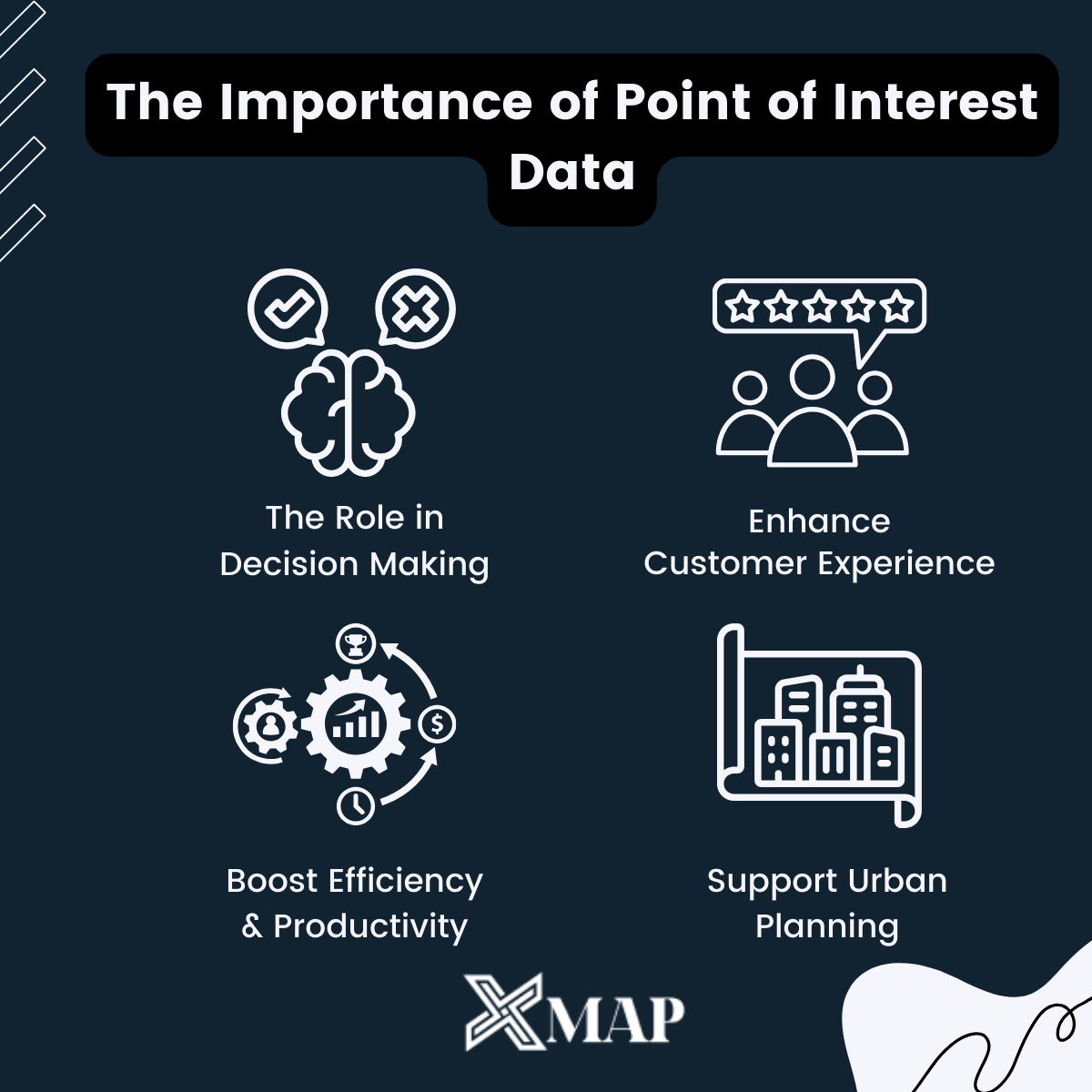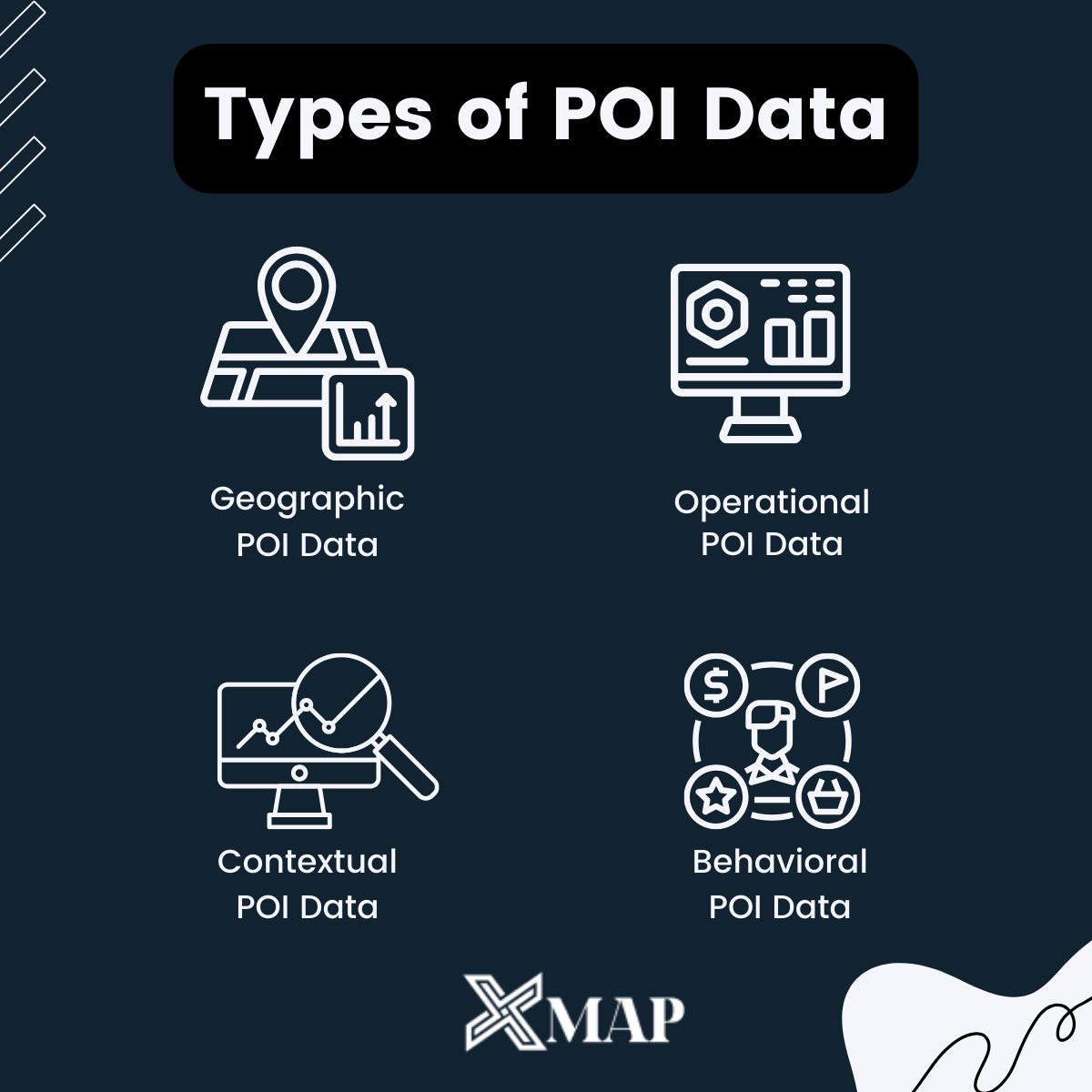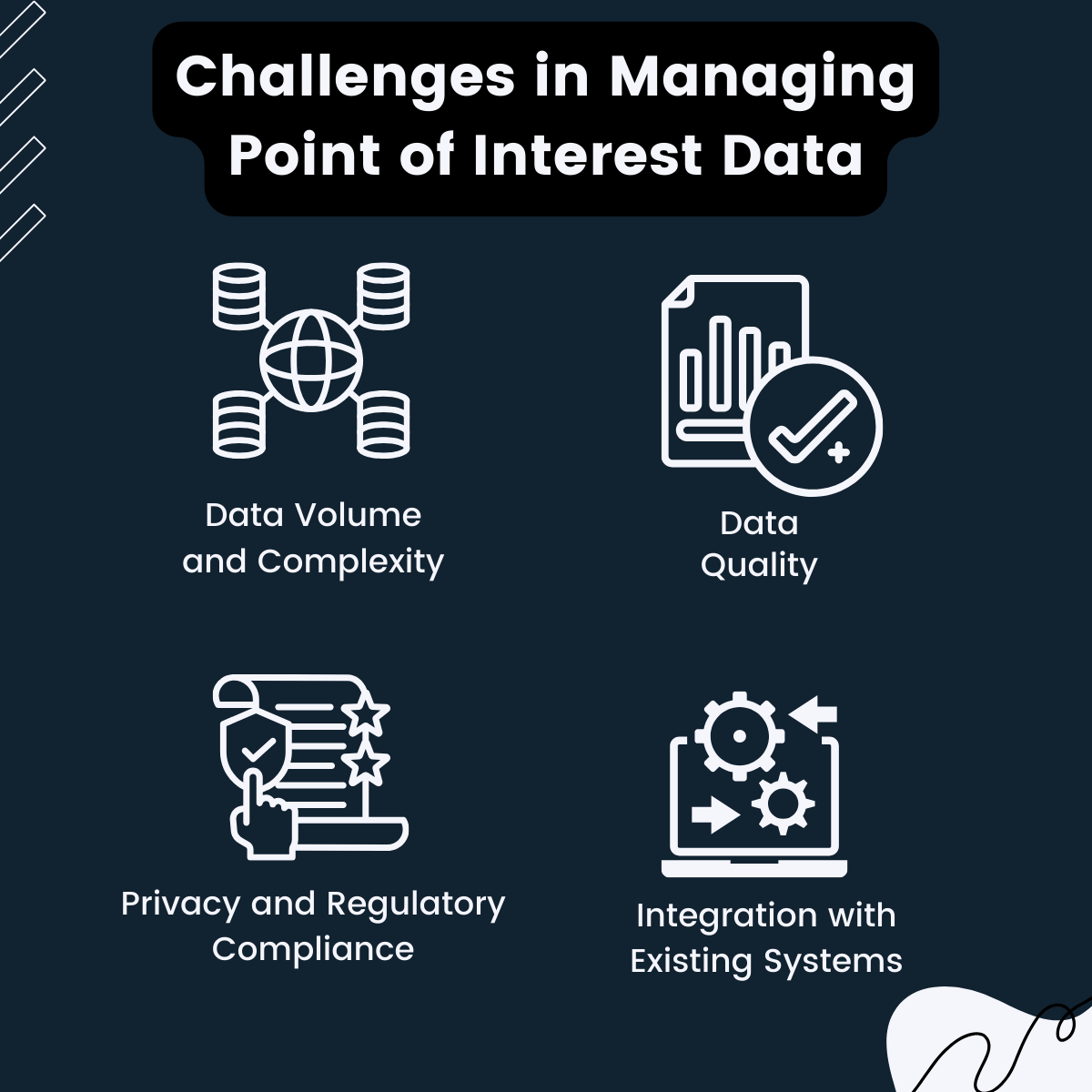All You Need to Know about Point of Interest Data: A Comprehensive Guide


In the ensuing article, we delve into the world of Point of Interest Data, dissecting its meaning, significance, types, management challenges, best practices, and real-world applications.
Point of Interest Data or POI data, a phrase that's been buzzing around the spheres of geographic information systems (GIS) and location intelligence, has recently been gaining a robust recognition. But what exactly is it? What is its relevance and why does it matter? In the ensuing article, we delve into the world of Point of Interest Data, dissecting its meaning, significance, types, management challenges, best practices, and real-world applications.
Point of Interest Data, commonly referred to as POI data, is a form of data capturing and representing specific, predefined geographical locations or features that hold a certain interest or relevance. This relevance may be on a personal, business, educational, societal, or governmental level. POI data is typically used within Geographic Information Systems (GIS), cartography, and navigation systems such as GPS.
These “Points of Interest” could include a wide range of locations, such as restaurants, shops, museums, parks, historic sites, schools, hospitals, and railway stations, to name just a few. Each Point of Interest is assigned a set of attributes or tags that provide additional information about the location, including its name, address, type or category, opening hours, contact details, and more.
From a technical standpoint, POI data is a type of spatial data, meaning it has a geographical or locational aspect. Each point of interest is typically represented as a coordinate pair (latitude and longitude) in a geographic coordinate system.
POI data is not static, it evolves over time. This dynamic nature is due to factors such as the opening and closing of businesses, changes in road networks, construction of new buildings, and societal changes. Therefore, it is imperative that POI data is kept up-to-date to ensure its accuracy and reliability.
In the realm of business, POI data has become a critical tool for a variety of applications. It plays a pivotal role in location-based services, market research, logistics, urban planning, and many other fields. The increasing availability of POI data, coupled with advancements in data processing and analytics technologies, has opened up a world of possibilities for leveraging this type of data.
As we delve deeper into the digital age, the importance of Point of Interest (POI) data continues to grow exponentially. But why is this data so crucial in contemporary society and the business landscape?

In essence, POI data is the lifeblood of spatial analytics and location intelligence, both of which are indispensable in a variety of sectors. From retail to real estate, urban planning to marketing strategies, POI data is making waves. Let's break it down.
First and foremost, POI data plays a pivotal role in decision-making. Through the analysis of specific points, organizations can gain invaluable insights into customer behavior, market trends, and competitive landscapes. In turn, these insights can guide strategic decisions, from identifying ideal store locations to understanding the demographics of a specific area.
Furthermore, POI data is a vital tool for enhancing customer experience. By understanding the places that customers frequent, businesses can tailor their marketing efforts to reach the right audience at the right time. This personalized approach not only increases customer engagement but also boosts return on investment.
Moreover, POI data boosts efficiency and productivity in various operational aspects. For example, in logistics and supply chain management, understanding the proximity of specific locations to transportation routes or warehouses can optimize route planning and delivery times.
Finally, on a larger scale, POI data supports sustainable urban planning. By analyzing the distribution of different points of interest, city planners can design more efficient, sustainable, and livable urban environments. This application of POI data is particularly crucial as we continue to grapple with the challenges of urbanization and climate change.

Point of Interest (POI) data is diverse, reflecting the wide array of interests and industries that utilize this vital information. The granularity of data can range from broad categories to specific, detailed insights. Let's delve into the different types of POI data:
The most basic form of POI data is geographic information. This includes data such as address, geocodes, latitude and longitude coordinates, and the specific location of the point on a map. This data can be incredibly helpful in various sectors such as logistics and transportation, urban planning, and tourism.
This type of data provides details on the functionality of a location. It might encompass business hours, contact information, the services or goods provided, and other key operational factors. Operational POI data can significantly impact businesses, especially those in the retail or hospitality industries.
Contextual data refers to information that provides a deeper understanding of a location. This might include data on the surrounding area, demographics, local events, or even historical significance. Contextual POI data is particularly useful in fields such as real estate, urban planning, and marketing.
Arguably the most complex, behavioral POI data involves understanding how people interact with a location. This could involve foot traffic patterns, customer behavior, or sentiment analysis. Businesses, especially those in retail, can utilize this data to strategically plan their operations and tailor their marketing initiatives.

Despite the undeniable advantages of point of interest data, it presents several challenges that businesses and organizations must tackle with precision. The hurdles range from data management and quality assurance to privacy concerns and regulatory compliance.
The sheer volume of point of interest data is staggering, and it grows exponentially with the rise of digital technology, mobile devices, and social media. Managing this extensive amount of data, which often contains intricate details and connections, can be a daunting task for businesses. It requires robust and scalable data management systems that can handle the complexity and deliver actionable insights without becoming overwhelmed.
Ensuring the quality of POI data is another significant challenge. As data is gathered from multiple sources, it can often be fragmented, inconsistent, and outdated. This is where data cleansing, validation, and updating become crucial. Without these processes, the data's reliability might be compromised, leading to misguided decisions or strategies.
POI data often includes sensitive personal information. As such, it falls under stringent data privacy regulations, such as the General Data Protection Regulation (GDPR) in the EU. Ensuring compliance with these regulations while still leveraging the data's potential is a complex balancing act that businesses must perform.
Point of interest data must be efficiently integrated with existing data systems. This integration can pose challenges, given the diverse formats, structures, and sources of POI data. Inefficient integration can lead to data silos, making it difficult for organizations to gain a comprehensive view of the data landscape.

Utilizing Point of Interest (POI) data to its full potential involves strategic planning, careful execution, and continuous monitoring. Here are some best practices business and organizations can adopt to make the most out of POI data:
First and foremost, the accuracy of POI data is critical. Data verification involves checking the data for accuracy and completeness. It's not enough to collect data; the information must be accurate to be valuable. Reliable and robust verification processes must be in place to ensure that the data collected aligns with real-world scenarios.
POI data becomes more valuable when integrated with other relevant datasets. It could be demographic data, transactional data, mobility data, or any other dataset that aligns with your business goals. Integrating POI data with other data sources provides a fuller picture of the situation, allowing for more informed decision-making.
Analysis transforms raw data into actionable insights. Businesses should employ advanced analytical tools and techniques, like machine learning and AI, to draw meaningful insights from the data. Deep diving into the data patterns, trends, and correlations can reveal valuable insights that can drive strategic decisions.
Visualizing data can make it easier to understand and interpret. It’s especially important with geographic POI data, where maps and spatial representations can provide clear, intuitive insights. Tools that allow for interactive visualization can also help users explore the data and discover patterns that might not be apparent in raw numbers or text.
With the increase in data collection and utilization, privacy issues have become a paramount concern. Businesses should strictly abide by data privacy regulations and guidelines. Transparent data handling and privacy policies can foster trust with customers and protect the business from potential legal issues.
Given the dynamic nature of POI data, businesses should commit to continuous improvement. They should regularly review and update their POI data practices, stay abreast of technological advancements, and adapt to changes in the business environment or regulatory landscape.
With careful planning and execution, businesses can leverage POI data to drive decision-making, enhance customer experience, boost efficiency, and support sustainable urban planning.
Point of Interest (POI) data has proven invaluable across diverse industries, driving growth, development, and innovation. Let's delve into a few real-world examples that underscore the power and potential of POI data when harnessed effectively.
On a larger scale, POI data is playing a pivotal role in urban planning and development. New York City's government, for instance, uses POI data in its quest for sustainable urban development. By integrating data on parks, transport hubs, businesses, residential areas, and more, the city can effectively plan new infrastructure, analyze environmental impact, and make informed decisions that promote sustainability and improve quality of life for residents.
Singapore's Urban Redevelopment Authority (URA) is another prime example of the practical application of POI data on a city-wide scale. With a dense urban population and bustling city life, Singapore faces unique challenges in traffic management and city layout planning. The URA, however, leverages point of interest data to address these issues with a combination of innovation and foresight.
Primarily, URA collects POI data pertaining to transportation nodes, commercial hubs, and recreational spaces among others. This data is then used to:
Key AreaFunctionBenefitsTraffic ManagementAnalyzing traffic patterns and predicting hotspotsReduced congestion and better traffic flowCity Layout PlanningOptimal space usage and efficient planningImproved city life quality and enhanced urban sustainability

In the realm of Point of Interest data, xMap has emerged as a trailblazer. As a premier POI data provider, xMap plays a vital role in transforming raw data into actionable insights, enabling businesses to capitalize on the myriad benefits of POI data.
xMap offers a comprehensive suite of POI data, encompassing geographic, operational, contextual, and behavioral POI data. The data provided by xMap is distinct for its high level of accuracy, granularity, and relevance, making it a reliable resource for organizations across sectors.
Geographic POI Data: xMap's geographic data encompasses exhaustive details about a location, including its latitude, longitude, elevation, and more. This data forms the bedrock of many location-based services, such as navigation, real estate, retail, and logistics.
Operational POI Data: xMap's operational data provides critical insights into the operational aspects of various establishments, like opening hours, services offered, and customer ratings. This data can be instrumental for businesses seeking to understand their competitive landscape.
Contextual POI Data: xMap's contextual data augments the geographical and operational data with additional context, providing a well-rounded view of a location. This might include demographic data, traffic patterns, or environmental data, among others.
Behavioral POI Data: xMap's behavioral data captures the movement patterns and behaviors of individuals within a specific location. This data can be leveraged for targeted advertising, urban planning, transportation, and more.
One of the key differentiators of xMap is its commitment to data quality. xMap employs rigorous data verification processes to ensure that the POI data it provides is not only accurate but also up-to-date. This meticulous attention to detail reduces the risk of decision-making based on outdated or erroneous data.
Furthermore, xMap prioritizes data privacy and adheres to all relevant privacy regulations and standards. This commitment is vital in an era where data privacy has become a major concern for consumers and regulatory bodies alike.
In addition to providing quality POI data, xMap also offers robust data integration solutions. These solutions empower businesses to seamlessly integrate the POI data with their existing systems, thereby enhancing their capability to derive meaningful insights and drive business growth.
To conclude, xMap stands as a leading POI data provider, equipping businesses with the data they need to make informed decisions, enhance customer experiences, boost efficiency, and support sustainable urban planning.
Whatever your goal or project size, we will handle it.
We will ensure you 100% satisfication.
"We focus on delivering quality data tailored to businesses needs in the middle east. Whether you are a restaurant, a hotel, or even a gym, you can empower your operations' decisions with geo-data.”